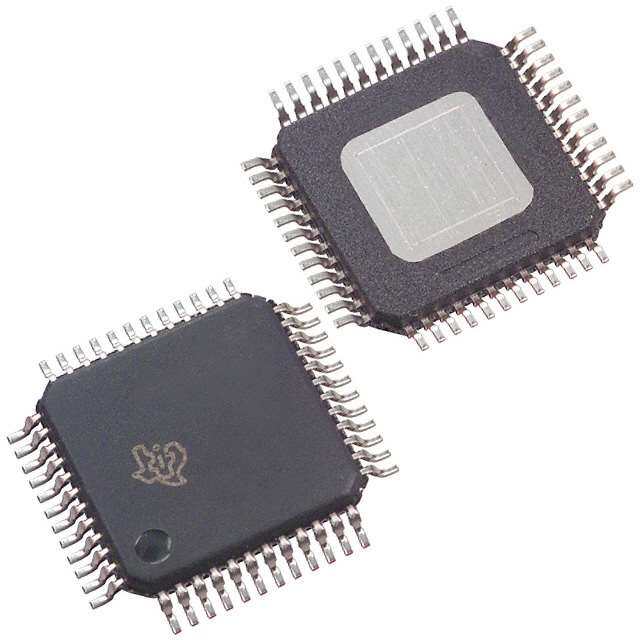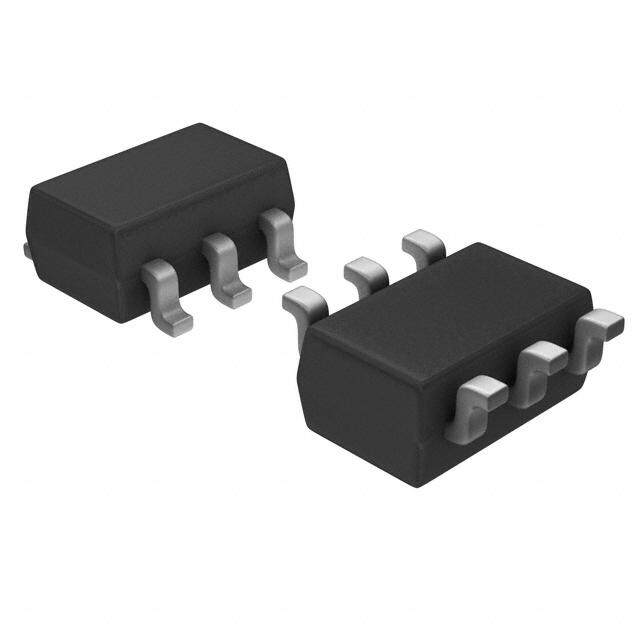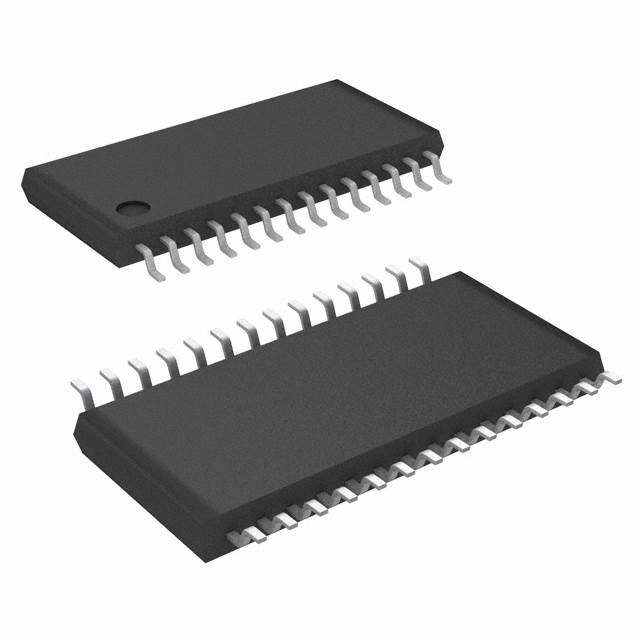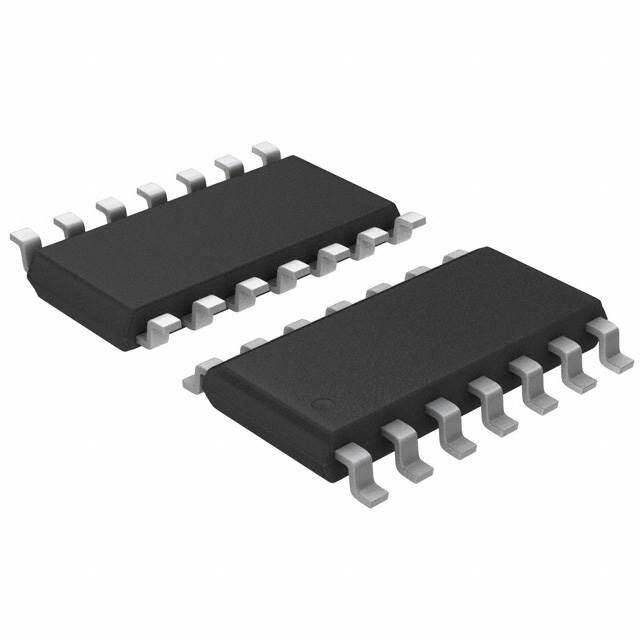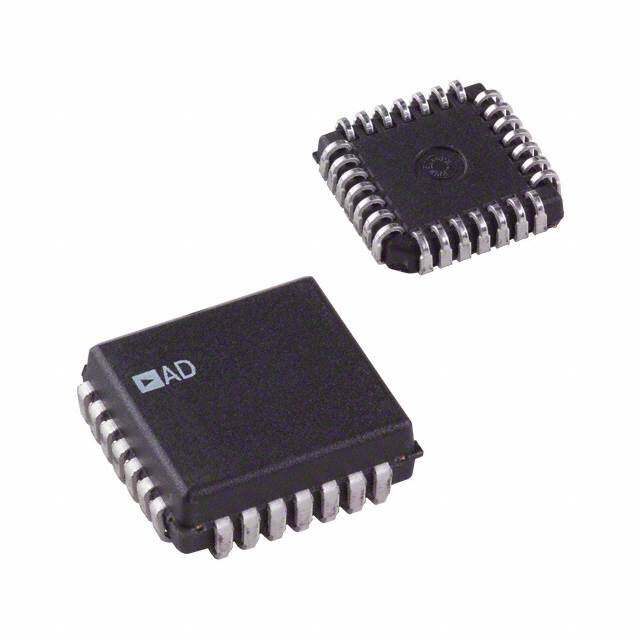ICGOO在线商城 > 集成电路(IC) > 数据采集 - 模数转换器 > NAU7802KGI
- 型号: NAU7802KGI
- 制造商: Nuvoton Technology Corporation of America
- 库位|库存: xxxx|xxxx
- 要求:
| 数量阶梯 | 香港交货 | 国内含税 |
| +xxxx | $xxxx | ¥xxxx |
查看当月历史价格
查看今年历史价格
NAU7802KGI产品简介:
ICGOO电子元器件商城为您提供NAU7802KGI由Nuvoton Technology Corporation of America设计生产,在icgoo商城现货销售,并且可以通过原厂、代理商等渠道进行代购。 NAU7802KGI价格参考。Nuvoton Technology Corporation of AmericaNAU7802KGI封装/规格:数据采集 - 模数转换器, 24 Bit Analog to Digital Converter 2 Input 1 Sigma-Delta 16-PDIP。您可以下载NAU7802KGI参考资料、Datasheet数据手册功能说明书,资料中有NAU7802KGI 详细功能的应用电路图电压和使用方法及教程。
| 参数 | 数值 |
| 产品目录 | 集成电路 (IC) |
| 描述 | IC ADC 24BIT I2C/SRL 16DIP |
| 产品分类 | |
| 品牌 | Nuvoton Technology Corporation of America |
| 数据手册 | |
| 产品图片 |
|
| 产品型号 | NAU7802KGI |
| rohs | 无铅 / 符合限制有害物质指令(RoHS)规范要求 |
| 产品系列 | - |
| 位数 | 24 |
| 供应商器件封装 | 16-PDIP |
| 包装 | 管件 |
| 安装类型 | 通孔 |
| 封装/外壳 | 16-DIP(0.300",7.62mm) |
| 工作温度 | -40°C ~ 85°C |
| 数据接口 | I²C, 串行 |
| 标准包装 | 30 |
| 电压源 | 模拟和数字 |
| 转换器数 | 1 |
| 输入数和类型 | 4 个单端,2 个差分 |
| 采样率(每秒) | - |


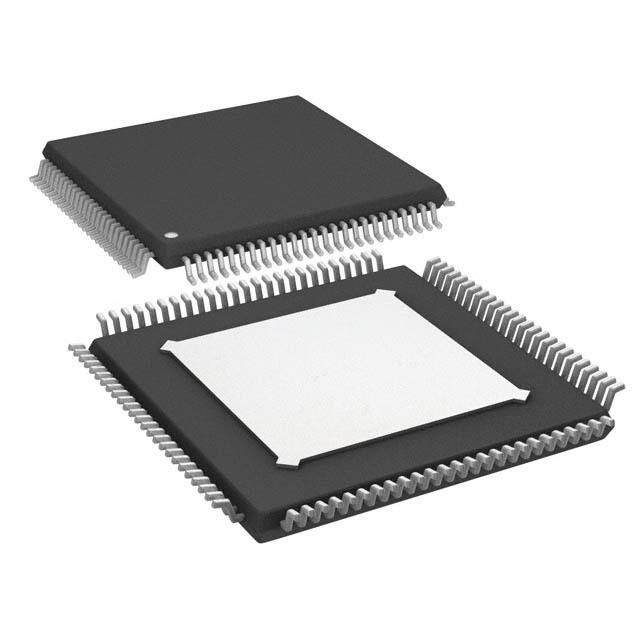
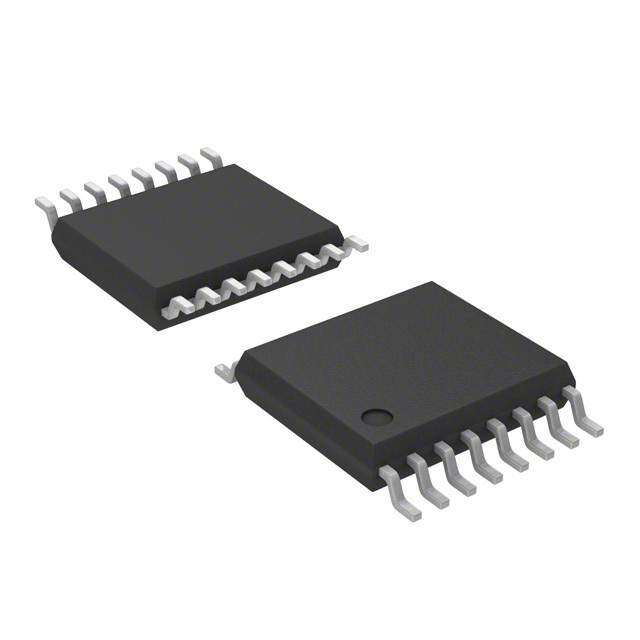
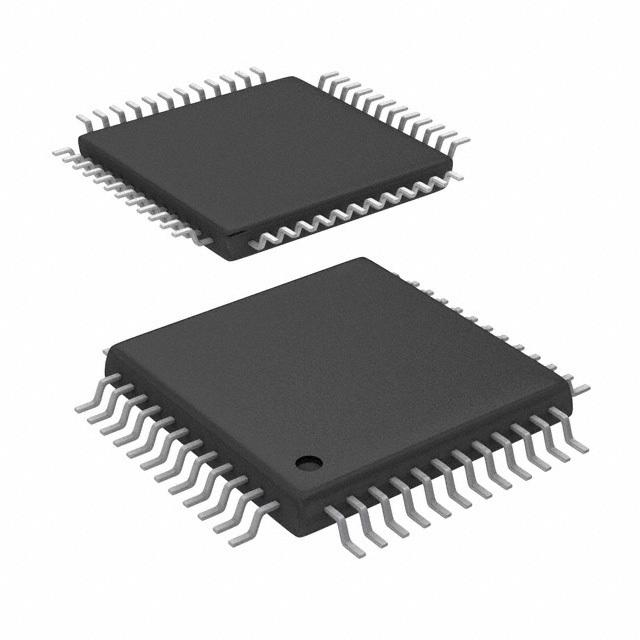
PDF Datasheet 数据手册内容提取
NAU7802 24-bit ADC NAU7802 24-Bit Dual-Channel ADC For Bridge Sensors Date: January, 2012 Revision 1.7 Nuvoton Confidential - 1 - Revision 1.7
NAU7802 24-bit ADC Table of Contents 1 GENERAL DESCRIPTION ......................................................................................................... 4 2 SYSTEM BLOCK DIAGRAM ...................................................................................................... 4 3 FEATURES ................................................................................................................................. 4 4 APPLICATIONS .......................................................................................................................... 5 5 PIN CONFIGURATION ............................................................................................................... 6 6 PIN DESCRIPTION ..................................................................................................................... 6 7 ELECTRICAL CHARACTERISTICS ........................................................................................... 7 7.1 Absolute Maximum Ratings ............................................................................................ 7 7.2 DC ELECTRICAL CHARACTERISTICS ........................................................................ 7 7.3 RC OSC AND AC CHARACTERISTICS ........................................................................ 9 7.4 TEMPERATURE SENSOR............................................................................................. 9 7.5 Typical Characteristic .................................................................................................... 10 7.5.1 NAU7802 Linearity – (Error % vs. Input Voltage) ............................................................10 7.5.2 Noise Performance – NAU7802 ......................................................................................11 7.5.3 ESD Performance – NAU7802 ........................................................................................11 7.6 DIGITAL SERIAL INTERFACE TIMING ....................................................................... 12 8 FUNCTIONAL DESCRIPTION .................................................................................................. 13 8.1 Analog input (VIN1P, VIN1N, VIN2N, VIN2P) .............................................................. 13 8.2 Power supply ................................................................................................................ 13 8.3 2-Wire-Serial Control and Data Bus (I2C Style Interface) ............................................ 13 8.3.1 2-Wire Protocol Convention ............................................................................................14 8.3.2 2-Wire Write Operation ...................................................................................................16 8.3.3 2-Wire Single Read Operation ........................................................................................16 8.4 2-Wire Timing ................................................................................................................ 17 8.5 NAU7802 Streaming Data Mode .................................................................................. 18 8.5.1 Enabling the Streaming I2C Mode ..................................................................................18 8.5.2 Streaming I2C Mode R/W Protocol 1 ..............................................................................18 8.5.3 Streaming I2C Mode R/W Protocol 2 ..............................................................................19 8.6 Device Calibration Features ......................................................................................... 20 8.6.1 Internal or External calibration.........................................................................................20 8.6.2 Calibration Limitations .....................................................................................................21 8.6.3 Calibration Error ..............................................................................................................21 8.7 Internal Band-Gap Circuit ................................................................................................ 22 8.8 Reset and Power-down mode ...................................................................................... 22 8.9 Temperature sensor ...................................................................................................... 23 8.10 Oscillator Features ........................................................................................................ 24 8.10.1 External Crystal Oscillator .............................................................................................24 8.10.2 External Clock Source ...................................................................................................24 9 APPLICATION INFORMATION ................................................................................................ 25 9.1 Power-On Sequencing .................................................................................................. 25 9.2 Signal path normal operation ........................................................................................ 25 9.3 Signal path with PGA bypass enabled .......................................................................... 26 Nuvoton Confidential - 2 - Revision 1.7
NAU7802 24-bit ADC 9.4 16-pin application circuit ............................................................................................... 27 10 SUMMARY DEVICE REGISTER MAP ..................................................................................... 28 11 DEVICE REGISTER MAP DETAILS ......................................................................................... 29 11.1 REG0x00:PU_CTRL ..................................................................................................... 29 11.2 REG0x01:CTRL1 .......................................................................................................... 30 11.3 REG0x02:CTRL2 .......................................................................................................... 31 11.4 REG0x03-REG0x05: Channel 1 OFFSET Calibration ................................................. 32 11.5 REG0x06-REG0x09: Channel 1 GAIN Calibration ....................................................... 32 11.6 REG0x0A-REG0x0C: Channel 2 OFFSET Calibration (NAU7802 - only) ................... 32 11.7 REG0x0D-REG0x10: Channel 2 GAIN Calibration (NAU7802 - only) ......................... 32 11.8 REG0x11: I2C Control .................................................................................................. 33 11.9 REG0x12-REG0x14: ADC Conversion Result ............................................................. 34 11.10 REG0x15: ADC registers .......................................................................................... 35 REG0x15-REG0x17: OTP Read Value and REG0x15 ADC Registers Read .......................... 36 11.11 REG0x18: Read Only ............................................................................................... 36 11.12 REG0x19: Read Only ............................................................................................... 36 11.13 REG0x1A: Read Only ............................................................................................... 36 11.14 REG0x1B: PGA Registers ........................................................................................ 36 11.15 REG0x1C: POWER CONTROL Register ................................................................. 37 11.15.1 REG0x1D: Read Only .................................................................................................37 11.15.2 REG0x1E: Read Only .................................................................................................37 11.15.3 REG0x1F: Read Only .................................................................................................37 12 PACKAGE DIMENSIONS ......................................................................................................... 38 12.1 16L SOP – 150 mil ........................................................................................................ 38 12.2 PDIP16L - 300 mil ......................................................................................................... 39 13 PART ORDERING INFORMATION .......................................................................................... 40 14 REVISION HISTORY ................................................................................................................ 41 Nuvoton Confidential - 3 - Revision 1.7
NAU7802 24-bit ADC 1 GENERAL DESCRIPTION The Nuvoton NAU7802 is a precision low-power 24-bit analog-to-digital converter (ADC), with an onboard low-noise programmable gain amplifier (PGA), onboard RC or Crystal oscillator, and a precision 24-bit sigma-delta (Σ-Δ) analog to digital converter (ADC). The NAU7802 device is capable of up to 23-bit ENOB (Effective Number Of Bits) performance. This device provides a complete front-end solution for bridge/sensor measurement such as in weigh scales, strain gauges, and many other high resolution, low sample rate applications. The many built-in features enable high performance applications with very low external parts count. Additionally, both operating current and standby current are very low, and many power management features are included. These enable powering only those elements of the chip that are needed, and also, to operate at greatly reduced power if the full 23-bit ENOB performance is not required. The Programmable Gain Amplifier (PGA) provides selectable gains from 1 to 128. The A/D conversion is performed with a Sigma-Delta modulator and programmable FIR filter that provides a simultaneous 50Hz and 60Hz notch filter to effectively improve interference immunity. Also, this device provides a standard 2-wire interface compatible with I2C protocol for simple and straightforward connection to and interoperation with a wide range of possible host processors. 2 SYSTEM BLOCK DIAGRAM 2.7V~5.5V Input VBG AVDD DVDD XIN XOUT To serial Interface Bandgap LDO IO Power To Reference 1 Analog LDO Internal RC Circuit VLDO[1:0] 0 Oscillator digital logic OSCS Control Signal CHS CRS[2:0] 14 SDIO VIN1P PGA[1:0] SCLK Digital VIN2P DRDY PGA 24-bit ADC ADC result Interface VIN1N 24 VIN2N Temperature Sensor AVSS REFP REFN DVSS Nuvoton Confidential - 4 - Revision 1.7
NAU7802 24-bit ADC 3 FEATURES Supply power: 2.7V~5.5V On-chip VDDA regulator for internal analog circuit or external load cell Programmable VDDA: Off, 2.4V to 4.5V with eight options Minimum 10mA output drive capability at 3.0V output voltage Note: DVDD must be 0.3Vdc greater than desired VDDA output voltage 23 bits effective precision analog-to-digital converter Simultaneous 50Hz and 60Hz rejection (reaching -90dB) RMS Noise: 50nV in 10 SPS data output rate and PGA gain = 128 150nV in 80 SPS data output rate and PGA gain = 128 Programmable PGA gains from 1 to 128 Programmable ADC data output rates External differential reference voltage range from 0.1V to 5V System clock: External crystal oscillator or on-chip RC oscillator (4.9152Mhz) On-chip calibration On-chip power-on reset circuit On-chip temperature sensor Low Power Consumption and Programmable Power Management Options < 1uA standby current External 4.9152MHz Crystal oscillator System clock: Internal 4.9152MHz RC oscillator (power-on default system clock) External 4.9152MHz Crystal oscillator MCU control interface: 2-wire interface compatible with I2C protocol Operating Temperature: -40~85C Packages: SOP-16 (150mil) / PDIP-16 4 APPLICATIONS Weigh scales Strain Gauge Industrial process control Liquid/gas flow control Pressure sensors Voltage monitors Nuvoton Confidential - 5 - Revision 1.7
NAU7802 24-bit ADC 5 PIN CONFIGURATION REFP 1 16 AVDD/LDO VIN1N 2 15 DVDD VIN1P 3 14 SDIO SOP-16 VIN2N 4 (150mil) 13 SCLK VIN2P 5 or 12 DRDY VBG 6 DIP-16 11 XOUT REFN 7 10 XIN AVSS 8 9 DVSS 6 PIN DESCRIPTION Pin No. Pin Name Type DESCRIPTIONS 1 REFP AI Positive reference input 2 VIN1N AI Inverting Input #1 3 VIN1P AI Non-Inverting Input #1 4 VIN2N AI Inverting Input #2 5 VIN2P AI Non-Inverting Input #2 6 VBG A High impedance Reference Voltage Output and Bypass 7 REFN AI Negative Reference Input 8 AVSS P Analog Ground 9 DVSS P Digital ground 10 XIN I External crystal oscillator input. Typically 4.9152 MHz 11 XOUT O External crystal oscillator output. 12 DRDY O Data Ready Output indicating a conversion is complete and new data are available for readout. (CMOS Driver high / low) 13 SCLK I Serial Data Clock Input (CMOS open drain output) 14 SDIO I/O Data Input / Output for serial communication with host (CMOS open drain output) 15 DVDD P Digital power supply: 2.7V ~ 5.5V 16 AVDD/LDO P Analog power supply: 1. From programmable LDO output, low ESR 1 ohm or less capacitor recommended 2. LDO off: external power supply: 2.7V ~ 5.5V Note : TYPE P: Power, AI: Analog input, AO: Analog output, I: input, O: output, I/O: bi-directional Nuvoton Confidential - 6 - Revision 1.7
NAU7802 24-bit ADC 7 ELECTRICAL CHARACTERISTICS 7.1 Absolute Maximum Ratings SYMBOL PARAMETER CONDITION MINIMUM MAXIMUM UNIT DVDD DVDDDVSS -0.3 +6.0 V DC Power Supply AVDD* AVDDAVSS -0.3 +6.0 V AVSSDVSS - -0.3 +0.3 V Analog Input Voltage AV AV AVSS -0.3 AVDD + 0.3 V IN IN Digital input Voltage DV DV DVSS -0.3 DVDD + 0.3 V IN IN Operating Temperature TA -40 +85 C Storage Temperature Tst -55 +150 C Note: Exposure to conditions beyond those listed under absolute maximum ratings may adversely affects the life time and reliability * AVDD should not exceed DVDD supply voltage 7.2 DC ELECTRICAL CHARACTERISTICS (Unless otherwise specified; Typical value is tested at TA=25C, DVDD = 5V, AVDD = 5V) SPECIFICATION PARAMETER TEST CONDITIONS MIN. TYP. MAX. UNIT POWER SUPPLY 2.7 5.5 V DVDD Operating Voltage 2.7 DVDD V AVDD 2.1 mA Internal OSC & LDO Operating Current 2 mA Internal OSC, no LDO All analog part include internal RC Power Down Current 0.2 1 A oscillator or external crystal oscillator. PUA =PUD=0 Nuvoton Confidential - 7 - Revision 1.7
NAU7802 24-bit ADC ANALOG INPUT Full-scale input range ± 0.5/(VREF/PGA) V VREF = REFP REFN (VINxP – VINxN) Common mode range with PGA AVSS + AVDD – V gain 64, 128 1.5 1.5 Common mode range with PGA AVSS - AVDD + V bypass enabled 0.1 0.1 Differential input impedance 5 GΩ PGA bypass=off, DC 2.27 Hz Data output rate = 10 SPS Bandwidth (-3dB) 18.17 Hz Data output rate = 80 SPS PGA 1 128 User-selectable gain range Input capacitance channel 1 14 pF Input capacitance channel 2 5 pF Differential Input leakage current 20 pA PGA bypass=off Burnout current sources 2.5 A SYSTEM PERFORMANCE Resolution 24 No missing codes Integral nonlinearity NAU7802 ± 0.0015 % of FS With calibration Offset error +/-0.3 ppm of FS With calibration, 1024 samples ppm of Offset error drift 0.02 With calibration FS/C Gain error 0.01 % With calibration Gain error drift 1 ppm/C With calibration 96 100 dB at DC 2.5 V ± 0.5 V f = 60 Hz, 500 mVpp 130 dB CM Common-mode rejection ADC data rate = 10 SPS f = 50 Hz, 500 mVpp 120 dB CM ADC data rate = 10 SPS f = 60 Hz, 500 mVpp 100 dB CM ADC data rate = 10 SPS Notch rejection f = 50 Hz, 500 mVpp 100 dB CM ADC data rate = 10 SPS Power supply rejection 96 100 dB at DC 5 V ± 0.25 V, with LDO VOLTAGE REFERENCE INPUT AVDD+. VREF = REFP REFN 1.5 AVDD V 0.1 VREFP- REFN input range -0.1 V 1.5 VREFN+ AVDD+ REFP input range 1.5 0.1 Nuvoton Confidential - 8 - Revision 1.7
NAU7802 24-bit ADC DIGITAL SERIAL INTERFACE Input Leakage Current SCK, SI -1 - +1 A DVDD = 5.5V, 0<V <DVDD IN Input High Voltage VIH 0.7 VDD 5.5 V Input low Voltage VIL DVSS 0.3 VDD V 0.9 VOH (DRDY) V IOH = 1 mA DVDD Defined by pull up resistor. 0.9 VOH (SCLK, SDIO) V (Internal weak, internal strong, DVDD external.) 0.2 VOL (SCLK, SDIO, DRDY) V IOL = 1 mA DVDD SDIO pull-up resistor Input High DVDD V VDD = 5.5V Voltage P1, P2, P3 (TTL input) SDIO, SCLK; pull up resistor value 1.6 k 50 k none Ohm Selectable; strong, weak, none Power On Reset Voltage 1.6 V 7.3 RC OSC AND AC CHARACTERISTICS Specification (reference) Test Conditions Parameter Min. Typ. Max. Unit 4.9152 MHz On-chip RC oscillator +/-3 % DVDD = 5V, T=25C; NAU7802 only T : Analog part wakeup stable plus RDY DVDD = 5V; at 10 S/sec Data Ready after exiting power-down 600 ms (5 sample times plus 100 ms) mode 7.4 TEMPERATURE SENSOR Specification (reference) Test Conditions Parameter Min. Typ. Max. Unit Temperature sensor output 109 mV at 25°C Temperature sensor delta coefficient 360 uV / °C relative to 25°C Nuvoton Confidential - 9 - Revision 1.7
NAU7802 24-bit ADC 7.5 Typical Characteristic 7.5.1 NAU7802 Linearity – (Error % vs. Input Voltage) AVDD = 4.5V / PGA gain = 1x 0.0008 0.0006 0.0004 0.0002 ) 0 S F -1.2 -1 -0.8 -0.6 -0.4 -0.2 0 0.2 f -0.0002 o % -0.0004 ( r -0.0006 o r r E -0.0008 -0.001 -0.0012 Input Signal Voltage (V : VINP - VINN) NAU7802 Linearity Performance is symmetric, from the differential input voltage -1.2V to 0V and from 0V to 1.2V. One-sided linearity performance result is shown. Nuvoton Confidential - 10 - Revision 1.7
NAU7802 24-bit ADC 7.5.2 Noise Performance – NAU7802 7.5.3 ESD Performance – NAU7802 Zapping PD PS ND NS Remark Method HBM 4kV 4kV -4kV -4kV Pass MM 400V 400V -400V -400V Pass Nuvoton Confidential - 11 - Revision 1.7
NAU7802 24-bit ADC 7.6 DIGITAL SERIAL INTERFACE TIMING TSTAH TSDIOS TSDIOH TSTAH SDIO TSCKH TFALL SCLK TSCKL TRISE TSTAS TSTOS Figure 7: Two-wire Control Mode Timing Symbol Description min typ max unit T SDIO falling edge to SCLK falling edge hold timing in 600 - - ns STAH START / Repeat START condition T SCLK rising edge to SDIO falling edge setup timing in 600 - - ns STAS Repeat START condition T SCLK rising edge to SDIO rising edge setup timing in 600 - - ns STOS STOP condition T SCLK High Pulse Width 600 - - ns SCKH T SCLK Low Pulse Width 1,300 - - ns SCKL T Rise Time for all 2-wire Mode Signals - - 300 ns RISE T Fall Time for all 2-wire Mode Signals - - 300 ns FALL T SDIO to SCLK Rising Edge DATA Setup Time 100 - - ns SDIOS T SCLK falling Edge to SDIO DATA Hold Time 0 - 600 ns SDIOH Nuvoton Confidential - 12 - Revision 1.7
NAU7802 24-bit ADC 8 FUNCTIONAL DESCRIPTION 8.1 Analog input (VIN1P, VIN1N, VIN2N, VIN2P) The input signal to be measured is applied to one of two differential input signal pairs. The desired signal pair is selected using an analog input multiplexer, which is controlled by settings in the device command and control registers. The 8-pin version of the device supports only one input signal pair. This device is optimized to accept differential input signals, but can also measure single-ended signals. When measuring single-ended signals with respect to ground, connect the negative input (VIN1N or VIN2N) to ground and connect the input signal to the positive input (VIN1P or VIN2P). Note that when this device is configured this way, only half of the converter full-scale range is used, since only positive digital output codes are produced. 8.2 Power supply The digital power supply DVDD should use the same power source as used for the host processor supporting the digital interface communication. The analog power supply AVDD can be provided by external regulator output (power-on default setting) or provided by a built-in voltage regulator. The eight programmable output voltage levels of the built-in regulator are: off (high-Z output, default power-on setting), 2.4V, 2.7V, 3.0V 3.3V, 3.6V, 4.2V, and 4.5V. This output is intended to provide the driving current for external sensors such as load cells for weight measurement applications. 8.3 2-Wire-Serial Control and Data Bus (I2C Style Interface) The serial interface provides a 2-wire bidirectional read/write data interface similar to and typically compatible with standard I2C protocol. This protocol defines any device that sends CLK onto the bus as a master, and the receiving device as slave. The NAU7802 can function only as a slave device. An external clock drives the device, and in accordance with the protocol, data is sent to or from the device accordingly. All functions are controlled by means of a register control interface in the device. Additionally, a "data ready" output pin is provided to indicate to the host that a new conversion has been completed and that data are ready to be read from the device. The host may either use this signal or poll device register R0x00 Bit 5 to determine when new data are available. Nuvoton Confidential - 13 - Revision 1.7
NAU7802 24-bit ADC 8.3.1 2-Wire Protocol Convention All 2-Wire interface operations must begin with a START condition, which is a HIGH-to-LOW transition of SDIO while SCLK is HIGH. All 2-Wire interface operations are terminated by a STOP condition, which is a LOW to HIGH transition of SDIO while SCLK is HIGH. A STOP condition at the end of a read or write operation places the serial interface in standby mode. An acknowledge (ACK), is a software convention is used to indicate a successful data transfer. To allow for the ACK response, the transmitting device releases the SDIO bus after transmitting eight bits. During the ninth clock cycle, the receiver pulls the SDIO line LOW to acknowledge the reception of the eight bits of data. Following a START condition, the master must output a device address byte. This consists of a 7-bit device address, and the LSB of the device address byte is the R/W (Read/Write) control bit. When R/W=1, this indicates the master is initiating a read operation from the slave device, and when R/W=0, the master is initiating a write operation to the slave device. If the device address matches the address of the slave device, the slave will output an ACK during the period when the master allows for the ACK signal. SDIO SCLK START STOP Figure 1: START and STOP Not Acknowledge SDIO Acknowledge SCLK 1 8 9 2 ...7 Figure 2: Acknowledge and NOT Acknowledge Device 0 1 0 1 0 1 0 R/W Address Byte Control A7 A6 A5 A4 A3 A2 A1 A0 Address Byte D7 D6 D5 D4 D3 D2 D1 D0 Data Byte Figure 3: Slave Address Byte, Control Address Byte, and Data Byte Nuvoton Confidential - 14 - Revision 1.7
NAU7802 24-bit ADC Device Address = 0101010 R/W Device Control (REG) Device DATA BYTE Device ACK Address = A7..A0 ACK = D7... D0 ACK SDIO 0 1 0 1 0 1 0 0=W A7 A0 D7 D0 A6...A1 D6...D1 START STOP SCLK 1 2 3 4 5 6 7 8 9 1 8 9 1 8 9 2 ...7 2 ...7 Figure 4: A complete 2 wire write 1 control register sequence Nuvoton Confidential - 15 - Revision 1.7
NAU7802 24-bit ADC 8.3.2 2-Wire Write Operation A Write operation consists of a two-byte instruction followed by one or more Data Bytes. A Write operation requires a START condition, followed by a valid device address byte with R/W=0, a valid control address byte, data byte(s), and a STOP condition. When more than one Data Byte is written, this is known as a "burst write" operation. In this operation, the host may write sequential bytes of information simply by transmitting a new data byte after each ACK from the NAU7802. The NAU7802 automatically increments the register address by one for each subsequent byte-write operation. This will continue until the STOP condition is met. The NAU87802 is permanently programmed with “010 1010” (0x2A) as the Device Address. If the Device Address matches this value, the NAU7802 will respond with the expected ACK signaling as it accepts the data being transmitted into it. Device Address = 0101010 R/W Device Control (REG) Device DATA BYTE Device ACK Address = A7..A0 ACK = D7... D0 ACK SDIO 0 1 0 1 0 1 0 0=W A7 A0 D7 D0 A6...A1 D6...D1 START STOP SCLK 1 2 3 4 5 6 7 8 9 1 8 9 1 8 9 2 ...7 2 ...7 Figure 5: Single Write Sequence SDIO Device Address[6:0] Write ACK REG Addr[7:0] ACK Write Data [7:0] ACK Write Data[7:0] for ACK = 0101010 for REG “Addr” REG “Addr+1” SCLK START 1 2 ….. 7 8 9 1 2 ….. 8 9 1 2 ….. 8 9 1 2 ….. 8 9 S T OP Figure 6: Burst Write Sequence 8.3.3 2-Wire Single Read Operation A Read operation consists of a three-byte Write instruction followed by a Read instruction of one or more data bytes. The bus master initiates the operation issuing the following sequence: a START condition, device address byte with the R/W bit set to “0”, and a Control Register Address byte. This indicates to the slave device which of its control registers is to be accessed. The NAU7802 is permanently programmed with “010 1010” (0x2A) as its device address. If the device address matches this value, the NAU7802 will respond with the expected ACK signaling as it accepts the Control Register Address being transmitted into it. After this, the master transmits a second START condition, and a second instantiation of the same device address, but now with R/W=1. After again recognizing its device address, the NAU7802 transmits an ACK, followed by a one byte value containing the data from the selected control register inside the NAU7802. During this phase, the master generates the ACK signaling with each byte transferred from the NAU7802. If there is no STOP signal from the master, the NAU7802 will internally auto-increment the target Control Register Address and then output the data bytes for this next register in the sequence. Nuvoton Confidential - 16 - Revision 1.7
NAU7802 24-bit ADC This process will continue while the Master continues to issue ACK signaling. If the Control Register Address being indexed inside the NAU7802 reaches the value 0x7F (hexadecimal) and the value for this register is output, the index will roll over to 0x00. The data bytes will continue to be output until the master terminates the read operation by issuing a STOP condition. Device Address[6:0] SDIO = 0101010 Write ACK REG Addr[7:0] ACK Device ID [6:0] Read ACK SCLK START 1 2 ….. 7 8 9 1 2 ….. 8 9 R e p e a t START 1 2 ….. 7 8 9 Host should not drive ACK right before host wants to issue STOP. Read Data[7:0] of REG “Addr” 1 2 ….. 8 9 S T OP Figure 7: Single Read Sequence Device Address[6:0] Device Address[6:0] SDIO = 0101010 Write ACK REG Addr[7:0] ACK = 0101010 Read ACK SCLK START 1 2 ….. 7 8 9 1 2 ….. 8 9 R e p e a t START 1 2 ….. 7 8 9 Host should not drive ACK right before host wants to issue STOP. Read Data[7:0] Host Read Data[7:0] of Host Read Data[7:0] of of REG “Addr” ACK REG “Addr+1" ACK REG “Addr+2” 1 2 ….. 8 9 1 2 ….. 8 9 1 2 ….. 8 9 S TOP Figure 8: Burst Read Sequence 8.4 2-Wire Timing Please see electrical specifications The NAU7802 is compatible with serial clock speeds defined as “standard mode” with SCLK 0 - 100 kHz, and “fast mode” with SCLK 0 - 400 kHz. At these speeds the total bus line capacitance load is required to be 400 pF or less. Open collector drivers are required for the serial interface. Therefore, the bus line rise time is determined by the total serial bus capacitance and the DVDD pull-up resistors. The NAU7802 defaults to a weak pull up (typical 50 k ohm) for applications with no external pull up resistor. Register 0x11 bits 5:4 provide other options including a strong internal pull-up (typical 1.6 k ohm) or no internal pull-up resistor. Nuvoton Confidential - 17 - Revision 1.7
NAU7802 24-bit ADC 8.5 NAU7802 Streaming Data Mode 8.5.1 Enabling the Streaming I2C Mode Power Up the chip o Write 0x00 = 0x06 (PU analog and PU digital) o (read back 0x00 bit 3 to make sure chip is powered up) Enable Streaming I2C Mode o Write REG11[7]=1 to enable streaming mode 1, or Write REG11[7]=1 and REG11[6]=1 and REG15[7]=1 to enable streaming mode 2 o (read back 0x1D bit 7 to make sure the streaming I2C mode is active) 8.5.2 Streaming I2C Mode R/W Protocol 1 When REG0x11[7] CRSD=1, I2C is IDLE and a conversion is complete, NAU7802 will pull SDA/SDIO low to inform the host a conversion is complete. Host should respond by pulling SDA/SDIO low and pulling SCK low to initial an I2C “start” condition. When seeing SCK pulled low by host, NAU7802 will release the SDA/SDIO. Host can continue the standard I2C transaction with NAU7802 When I2C is IDLE and conversion complete NAU780X pulls SDA low until seeing host pulling SCK low Host Host SDIO ID[6:0] WrAckREAGD CAd OdUr[7T: 0]Ack ID[6:0] RdAckADCout[23:16]AckADCout[15:8]Ack ADCout[7:0] Repeat START START STOP SCLK 1 2 …7 8 9 10 11...16 17 18 19 20...25 26 27 28 29...34 35 36 37 38 43 44 45 46 47 52 53 54 Nuvoton Confidential - 18 - Revision 1.7
NAU7802 24-bit ADC 8.5.3 Streaming I2C Mode R/W Protocol 2 In addition to CASE1 REG11[7]=1, if REG0x11[6] FRD=1 and REG0x15[7]=1, host can direct issue a I2C read cycle (No writing register address first needed), after the Ack bit for the ID and “Read Select”, the following 24 SCK is used for NAU7802 to shift out the 24 bit ADC conversion result without the ACK bit needed. So the total Read ADC conversion data cycle can be shorten to 33 SCK comparing to 54 SCK plus a repeat start by using the standard I2C. When I2C is IDLE and conversion complete NAU780X pulls SDA Non-standard I2C transaction: low until seeing host using 24 SCK sending out 24 Next conversion pulling SCK low bit ADC data without ACK bit complete SDIO ID[6:0] RdAckADCout[23:16] ADCout[15:8] ADCout[7:0] ID[6:0] RdAck ADCout START STOP START SCLK 1 2 …7 8 9 10 11...16 17 18 19...24 25 26 27...32 33 1 2 …7 8 9 10 11... Note: Write NAU7802 register is always allowed by using Standard I2C write NAU7802 register protocol. So these two special bits can be reset to 0 to return to Standard I2C protocol Nuvoton Confidential - 19 - Revision 1.7
NAU7802 24-bit ADC 8.6 Device Calibration Features Calibration is not required for low accuracy applications, but may be needed in sensitive applications. When calibration is used the system designer has three options. Calibration can be performed at the system level with an external processor or at the ADC device. Inside the ADC device both internal and external calibration can be performed. Internal ADC device calibration only removes internal PGA gain and offset errors. External ADC device calibration removes DC errors at the device input pins and the internal PGA gain and offset errors. As with all devices of this type, the NAU7802 internal gain factors and offset voltages will contain small errors owing to fabrication process variations, power supply voltage changes, and temperature variations. The same types of errors exist at the external system level. These errors can be measured by the NAU7802 device itself using the calibration features. After calibration, the stored values in the calibration registers are automatically added/subtracted to the data from the ADC before being output as the ADC resulting data. It is recommended to calibrate the NAU8702 after the following conditions: Initial power-up Power-up after long-duration register mediated power-down conditions PGA gain changes Supply changes Significant temperature changes (can be measured using built-in thermal sensing feature) Sample rate changes Channel select changes Calibration is initiated by writing Logic=1 to R0x02 Bit 2. Bit 2 named “CALS” then becomes a status bit that can be read to know when calibration is complete. Internal or external calibration is performed on the Gain or Offset value and input channel as selected by other bits in R0x02. Bit 2 will remain Logic=1 until calibration is complete, and will read back as Logic=0 when calibration is completed. After calibration, it is important to check the CAL_ERR status bit to determine if there was any problem during calibration. If there was an error, all data output could be invalid. 8.6.1 Internal or External calibration The internal calibration disconnects the inputs from the input pins and internally connects the differential inputs to the same internal voltage reference point for calibration. the internal inputs for offset calibration. External calibration uses the inputs as-is, and it is up to the system designer to configure them appropriately for the calibration procedure. The resulting gain or offset calibration value is stored in the selected calibration register. The same register sets are used for both internal or external calibration and it is intended that only one choice of internal/external calibration is used at any given time. Nuvoton Confidential - 20 - Revision 1.7
NAU7802 24-bit ADC At all times, when reading a value from the ADC registers, the gain and offset calibration values are added/subtracted to the ADC value before being output. The default values for the calibration registers is zero, so these have no affect on the ADC output value until after a calibration operation has been instantiated. The resulting output value is calculated as: ADC Output Value = Gain_Calibration* (ADC measurement - Offset_Calibration) 8.6.2 Calibration Limitations Note that the offset that is trimmed from the input is mapped through the gain register. Additionally: Calibration can be limited by signal headroom in the analog path With the converters intrinsic gain & offset error the minimal full scale input range may be higher or lower. 8.6.3 Calibration Error A calibration error may occur during gain calibration when one of the following happens: The gain required to map input to full scale is larger than the range available in the gain register ~ 256 The offset adjusted input is negative, e.g. 256 > gain > 0 If there is a calibration error, CAL_ERR will set to Logic=1 when the calibration sequence is completed. Once CAL_ERR is set to Logic=1, it will remain in this state until either the NAU7802 is reset, or after a valid calibration sequence is completed. When CAL_ERR = 1, the data in the calibration registers is invalid. It is recommended perform the calibration routine again, or to write a default value into the calibration registers. Nuvoton Confidential - 21 - Revision 1.7
NAU7802 24-bit ADC 8.7 Internal Band-Gap Circuit An internal band-gap establishes accurate operation of the device over a wide temperature range. No adjustment of the bandgap is necessary. For optimum performance, the NAU7802 makes available a band-gap output pin “VBG” which should be bypassed to ground with a high quality X7R small value 0.1 uF filter capacitor. 8.8 Reset and Power-down mode An automatic built-in power-on reset function will reset the NAU7802 after DVDD power becomes valid. After AVDD power is stable (from external power or from the built-in regulator), reset may also be initiated at any time using the register control interface. The scope of the register based reset using register 0x00 bit 0, named “RR” set to 1, is equivalent to the power-on reset. Power-down standby mode can be selected using the register control interface using register 0x00 bits 2:1, named “PUA” and “PUD” set to 0. This mode shuts down the entire analog portion of the part, including the 24-bit ADC, voltage regulator, PGA, bandgap reference, and internal RC oscillator (or external crystal oscillator) to reduce power consumption. The command and control interface is static and works normally in power-down mode. Power-down mode can be terminated at any time by changing the register controls to return the device to normal operating mode, using register 0x00 bits 2:1, named “PUA” and “PUD” set to 1. In this way the contents of the registers are retained for immediate normal use. After reset or after resuming normal operating mode after power-down mode, the host should wait through six cycles of data conversion. This allows the device to stabilize all functions and to flush all old internal data for a full-accuracy output. This timing is automatically generated by the device for the DRDY pin and Data Ready device status bit. Nuvoton Confidential - 22 - Revision 1.7
NAU7802 24-bit ADC 8.9 Temperature sensor A matched pair of on-chip diodes provides temperature sensing capability. Temperature sensing is selected by setting of the analog input multiplexer using the register control interface. A PGA gain of 2x or 1x is used for temperature sensing to prevent PGA clipping. By measuring the difference in voltage of these diodes, temperature changes can be inferred from a baseline temperature. Please refer to the specification items “Temperature sensor output” and “Temperature sensor delta coefficient.” VIN1N VIN1P VIN2N VIN2P AVDD MUX PGA X2 1X 8X Figure 8 Nuvoton Confidential - 23 - Revision 1.7
NAU7802 24-bit ADC 8.10 Oscillator Features This device may either accept an external clock, use an internal RC oscillator, or use a built-in crystal oscillator for its time base. An accurate clock is important for the digital filtering of 50Hz or 60Hz components to work optimally. The internal oscillator is trimmed at the factory for good accuracy. The internal RC or crystal oscillator frequency may be output on the DRDY pin. This is done by programming R0x06 as follows: Write REG00[6] = 0: Use oscillator as system clock Write REG01[6] = 1: Output system clock on DRDY pin 8.10.1 External Crystal Oscillator When an external 4.9152MHz crystal oscillator is used, the preferred application circuit on the XIN & XOUT pins is as shown below. The crystal oscillator could operate without the 270 Ohm resistor and without the 18pF capacitor on XIN at a reduced performance. oonn cchhiipp XXIINN XXOOUUTT ooffff rreessiissttoorr 227700oohhmm ccaapp ccaapp 1188ppFF 1188ppFF 8.10.2 External Clock Source When the clock for the NAU7802 may also be provided from an external source. To use this feature, the device is configured in the same way as for using a crystal and the external clock signal is applied to the XIN pin. Nuvoton Confidential - 24 - Revision 1.7
NAU7802 24-bit ADC 9 APPLICATION INFORMATION This section includes both circuit diagram information and recommendations for programming the device. Programming is essential, as the device will not function until various default settings are changed to values appropriate for the application. 9.1 Power-On Sequencing After the DVDD supply is valid, and after the internal power-on reset is completed, the NAU7802 is ready for host program control access. The following steps apply to most applications. 1. Set the RR bit to 1 in R0x00, to guarantee a reset of all register values. 2. Set the RR bit to 0 and PUD bit 1, in R0x00, to enter normal operation 3. After about 200 microseconds, the PWRUP bit will be Logic=1 indicating the device is ready for the remaining programming setup. 4. At this point, all appropriate device selections and configuration can be made. a. For example R0x00 = 0xAE b. R0x15 = 0x30 5. No conversion will take place until the R0x00 bit 4 “CS” is set Logic=1 6. Enter the low power standby condition by setting PUA and PUD bits to 0, in R0x00 7. Resume operation by setting PUA and PUD bits to 1, in R0x00. This sequence is the same for powering up from the standby condition, except that from standby all of the information in the configuration and calibration registers will be retained if the power supply is stable. Depending on conditions and the application, it may be desirable to perform calibration again to update the calibration registers for the best possible accuracy. 9.2 Signal path normal operation In normal operation the input signal is full scale at the ADC input when (VINxP - VINxN) = +/- 0.5 * (REFP - REFN) / PGA_Gain, within the PGA common mode range. Nuvoton Confidential - 25 - Revision 1.7
NAU7802 24-bit ADC 9.3 Signal path with PGA bypass enabled Register 0x1B bit 4, “PGA bypass enable” removes the PGA from the signal path in applications where VINxP or VINxN approach AVDD or AVSS. Because the PGA has a limited common mode input range. In this range the PGA can be bypassed. In PGA bypass operation the input signal is full scale at the ADC input when (VINxP - VINxN) = +/- 0.5 * (REFP - REFN) within the ADC common mode range. Nuvoton Confidential - 26 - Revision 1.7
NAU7802 24-bit ADC 9.4 16-pin application circuit The built-in voltage regulator and built-in oscillator enable very low parts count applications as shown here. The signal input filter is optional, depending on the application requirements and can be expanded with decoupling capacitors to ground if needed. With a lithium-ion battery, an external voltage regulator for the DVDD supply may also be optional. Battery Charge Circuit 0.1uF 1uF 1uF Battery 47 1 REFP AVDD16 2 VIN1N DVDD15 VDD 0.1uF 3 VIN1P SDIO14 I/O Load Cell 4 VIN2N 16 SCLK13 I/O MCU Cfilter 5 VIN2P -pin DRDY12 I/O 47 6 VBG XOUT11 7 REFN XIN10 0.1uF 8 AVSS DVSS9 VSS 24-bit ADC For single channel applications, Cfilter can be added for enhanced ENOB at high PGA gain settings. The filter capacitor Cfilter provides additional filtering at the PGA output. It can be enabled by setting PGA_CAP_EN, Register 0x1C[7]=1. The following values are recommended for Cfilter: AVDD Supply Voltage (Volt) 3.3 4.5 Cfilter (pF) 330 680 Nuvoton Confidential - 27 - Revision 1.7
NAU7802 24-bit ADC 10 SUMMARY DEVICE REGISTER MAP Address Name Bit7 Bit6 Bit5 Bit4 Bit3 Bit2 Bit1 Bit0 Default 0x00 PU_CTRL AVDDS OSCS CR CS PUR PUA PUD RR 0x00 0x01 CTRL1 CRP VLDO[2:0] GAINS[2:0] 0x00 0x02 CTRL2 CHS CRS[1:0] CALS CALMOD[1:0] 0x00 0x03 OCAL1_B2 CH1 OFFSET Calibration[23:16] 0x00 0x04 OCAL1_B1 CH1 OFFSET Calibration[15:8] 0x00 0x05 OCAL1_B0 CH1 OFFSET Calibration[7:0] 0x00 0x06 GCAL1_B3 CH1 GAIN Calibration[31:24] 0x00 0x07 GCAL1_B2 CH1 GAIN Calibration[23:16] 0x80 0x08 GCAL1_B1 CH1 GAIN Calibration[15:8] 0x00 0x09 GCAL1_B0 CH1 GAIN Calibration[7:0] 0x00 0x0A OCAL2_B2 CH2 OFFSET Calibration[23:16] 0x00 0x0B OCAL2_B1 CH2 OFFSET Calibration[15:8] 0x00 0x0C OCAL2_B0 CH2 OFFSET Calibration[7:0] 0x00 0x0D GCAL2_B3 CH2 GAIN Calibration[31:24] 0x00 0x0E GCAL2_B2 CH2 GAIN Calibration[23:16] 0x80 0x0F GCAL2_B1 CH2 GAIN Calibration[15:8] 0x00 0x10 GCAL2_B0 CH2 GAIN Calibration[7:0] 0x00 0x11 I2C Control CRSD FDR SPE/WPD SI BOPGA TS / BGPCP 0x00 0x12 ADCO_B2 ADC_OUT[23:16] RO 0x13 ADCO_B1 ADC_OUT[15:8] RO 0x14 ADCO_B0 ADC_OUT[7:0] RO 0x15 OTP_B1 OTP[15:8] RO 0x16 OTP_B0 OTP[7:0] RO 0x1F Device Revision Code RO Nuvoton Confidential - 28 - Revision 1.7
NAU7802 24-bit ADC 11 DEVICE REGISTER MAP DETAILS 11.1 REG0x00:PU_CTRL Register Default = 0x00 Bit Name Description AVDD source select 7 AVDDS 1 = Internal LDO 0 = AVDD pin input (default) System clock source select 6 OSCS 1 = External Crystal 0 = Internal RC oscillator (default) Cycle ready (Read only Status) 5 CR 1 = ADC DATA is ready Cycle start 4 CS Synchronize conversion to the rising edge of this register Power up ready (Read Only Status) 3 PUR 1 = Power Up ready 0 = Power down, not ready Power up analog circuit 2 PUA 1 = Power up the chip analog circuits (PUD must be 1) 0 = Power down (default) Power up digital circuit 1 PUD 1 = Power up the chip digital logic 0 = power down (default) Register reset 1 = Register Reset, reset all register except RR 0 RR 0 = Normal Operation (default) RR is a level trigger reset control. RR=1, enter reset state, RR=0, leave reset state back to normal state. Nuvoton Confidential - 29 - Revision 1.7
NAU7802 24-bit ADC 11.2 REG0x01:CTRL1 Register Default= 0x00 Bit Name Description Conversion Ready Pin Polarity (16 Pin Package Only) 7 CRP 1=CRDY pin is LOW Active (Ready when 0) 0=CRDY pin is High Active(Ready when 1) (default) Select the function of DRDY pin 1: DRDY output the Buffered Crystal Clock if OSCS=1 6 DRDY_SEL output the internal OSC clock if OSCS= 0 0: DRDY output the conversion ready (default) LDO Voltage 111 = 2.4 110 = 2.7 101 = 3.0 5:3 VLDO 100 = 3.3 011 = 3.6 010 = 3.9 001 = 4.2 000 = 4.5 (default) Gain select 111 = x128 110 = x64 101 = x32 2:0 GAINS 100 = x16 011 =x8 010 = x4 001 = x2 000 = x1 (default) Nuvoton Confidential - 30 - Revision 1.7
NAU7802 24-bit ADC 11.3 REG0x02:CTRL2 Register Default =0x00 Bit Name Description Analog input channel select 7 CHS 1 = Ch2 0 = Ch1 (default) Conversion rate select 111 = 320SPS 011 = 80SPS 6:4 CRS 010 = 40SPS 001 = 20SPS 000 = 10SPS (default) Read Only calibration result 3 CAL_ERR 1: there is error in this calibration 0: there is no error Write 1 to this bit will trigger calibration based on the selection in CALMOD[1:0] This is an "Action" register bit. When calibration is 2 CALS finished, it will reset to 0 While this bit is still 1, the chip is still calibrating. An I2C write to this bit will be ignored and no additional calibration will be triggered 11 = Gain Calibration System 10 = Offset Calibration System 1:0 CALMOD 01 = Reserved 00 = Offset Calibration Internal (default) Nuvoton Confidential - 31 - Revision 1.7
NAU7802 24-bit ADC 11.4 REG0x03-REG0x05: Channel 1 OFFSET Calibration offset register bit 23 22 21 20 19 18 17 16 15 14 13 12 11 10 9 8 7 6 5 4 3 2 1 0 2- 2- 2- 2- 2- 2- 2- 2- 2- 2- offset +/- 2-1 2-2 2-3 2-4 2-5 2-6 2-7 2-8 2-9 2-10 2-11 2-12 2-13 14 15 16 17 18 19 20 21 22 23 default 0 0 0 0 0 0 0 0 0 0 0 0 0 0 0 0 0 0 0 0 0 0 0 0 11.5 REG0x06-REG0x09: Channel 1 GAIN Calibration gain register bit 31 30 29 28 27 26 25 24 23 22 21 20 19 18 17 16 15 14 13 12 11 10 9 8 7 6 5 4 3 2 1 0 2- 2- 2- 2- 2- 2- 2- 2- 2- 2- 2- 2- 2- 2- 2- 2- 2- 2- 2- 2- 2- 2- gain 28 27 26 25 24 23 22 21 20 2-22 1 2 2 3 4 5 6 7 8 9 10 11 12 13 14 15 16 17 18 19 20 21 default 0 0 0 0 0 0 0 0 1 0 0 0 0 0 0 0 0 0 0 0 0 0 0 0 0 0 0 0 0 0 0 0 11.6 REG0x0A-REG0x0C: Channel 2 OFFSET Calibration (NAU7802 - only) Register Default = 0x000000 offset register bit 23 22 21 20 19 18 17 16 15 14 13 12 11 10 9 8 7 6 5 4 3 2 1 0 2- 2- 2- 2- 2- 2- 2- 2- 2- 2- offset +/- 2-1 2-2 2-3 2-4 2-5 2-6 2-7 2-8 2-9 2-10 2-11 2-12 2-13 14 15 16 17 18 19 20 21 22 23 default 0 0 0 0 0 0 0 0 0 0 0 0 0 0 0 0 0 0 0 0 0 0 0 0 11.7 REG0x0D-REG0x10: Channel 2 GAIN Calibration (NAU7802 - only) Register Default = 0x00800000 gain register bit 31 30 29 28 27 26 25 24 23 22 21 20 19 18 17 16 15 14 13 12 11 10 9 8 7 6 5 4 3 2 1 0 2- 2- 2- 2- 2- 2- 2- 2- 2- 2- 2- 2- 2- 2- 2- 2- 2- 2- 2- 2- 2- 2- gain 28 27 26 25 24 23 22 21 20 2-22 1 2 2 3 4 5 6 7 8 9 10 11 12 13 14 15 16 17 18 19 20 21 default 0 0 0 0 0 0 0 0 1 0 0 0 0 0 0 0 0 0 0 0 0 0 0 0 0 0 0 0 0 0 0 0 Nuvoton Confidential - 32 - Revision 1.7
NAU7802 24-bit ADC 11.8 REG0x11: I2C Control Bit Name Description Enable bit for Pull SDA low when conversion complete and I2C IDLE(special non-standard I2C) 7 CRSD 1 = enable 0 = disable (default) Enable bit for Fast Read ADC DATA (special non-standard I2C) 1 = enable fast read ADC Data special non-standard I2C feature 6 FRD 0 = disable fast read ADC Data feature(default) REG0x15 bit 7 must be also set to 1 in order to have this function to work Enable bit for Strong Pull Up for I2C SCLK and SDA 5 SPE 1 = enable strong pull up (nominal 1.6 k ohm) 0 = disable strong pull up (default) Disable bit for Weak Pull Up for I2C SCLK and SDA 4 WPD 1 = disable weak pull up 0 = enable weak pull up (default nominal 50 k ohm) 3 SI Short the input together, measure offset Enables the 2.5uA burnout current source to the PGA positive 2 BOPGA input when set to „1‟. Default „0‟ disables the current source. Switches PGA input to temperature sensor when set to „1‟. 1 TS Default „0‟ uses VINx as PGA input Disables bandgap chopper when set to „1‟. 0 BGPCP Default „0‟ enables the bandgap chopper. Nuvoton Confidential - 33 - Revision 1.7
NAU7802 24-bit ADC 11.9 REG0x12-REG0x14: ADC Conversion Result REG0x12 (Read Only) ADCO_B2 ADC Conversion Result bit 23 to bit 16 REG0x13 (Read Only) ADCO_B1 ADC Conversion Result bit 15 to bit 8 REG0x14 (Read Only) ADCO_B0 ADC Conversion Result bit 7 to bit 0 Before reading an ADC Conversion Result, check if REG0x00 bit 5 CR=1 or DRDY pin showing Data Ready first. If not showing Data Ready, but a read of REG0x12 is performed, it will latch and shift out the previous conversion result. There are two options are necessary read a complete 24 bit ADC conversion result: Option 1: Use "I2C Burst Read 3 bytes" Issue I2C burst read 3 bytes sequence with starting address 0x12. In read data section of this burst read sequence, continuously read 3 bytes of data, the first byte will be the bit 23 to bit 16, the second byte will be bit 15 to bit 8, the third byte will be bit 7 to bit 0 of the ADC conversion result. Option 2: Use 3 "I2C Single Read" Step 1: Read REG0x12: bit 23 to bit 16 ADC conversion result will be shift out Step 2: Read REG0x13: bit 15 to bit 8 ADC conversion result will be shift out Step 3. Read REG0x14: bit 7 to bit 0 ADC conversion result will be shift out Note: The full 24-bit ADC conversion result is latched when the read REG0x12 command is decoded by the NAU7802. The following read of R0x13 and R0x14 will shift out the remainder of the latched ADC conversion result. This guarantees the 3 bytes of the data are from the same ADC sample conversion. Nuvoton Confidential - 34 - Revision 1.7
NAU7802 24-bit ADC 11.10 REG0x15: ADC registers Bit Name Description Select the CLK_CHP clock frequency. REG_CPHS[1] REG_CPHS[0] CLK_CHP clock frequency 0 0 Reserved 5:4 REG_CHPS 0 1 Reserved 1 0 Reserved 1 1 turned off, high ('1') state Select the ADC input common mode for unipolar configuration. ADC_VCM[1] ADC_VCM[0] CHP_CLKSD Delay 0 0 disable 0 1 disable Enable extended common mode. 3:2 ADC_VCM When voltage range close to REFN 1 0 with ADC gain divided by 2. Reduced common mode rejection. Requires PGA bypass mode set. Enable extended common mode. When voltage range close to REFP 1 1 with ADC gain divided by 2. Reduced common mode rejection. Requires PGA bypass mode set Select delay between ADC clock (CLKSD) and ADC chopper clock (CHP_CLKSD). 1:0 REG_CHP Clock delay variance between Chopper and ADC sections can improve linearity of the application. Issue an I2C write REG0x15 with write data will update the ADC registers. For reading back ADC registers, make sure REG0x1B[7] RD_OTP_SEL=0 (default), then issue a I2C read REG0x15 to read ADC registers ADC registers and OTP[32:24] are sharing REG0x15 when read back, the REG0x1B[7] RD_OTP_SEL (default 0) is used as read select REG0x15 REG0x1B[7]=RD_OTP_SEL=1 Read back OTP[32:24] Read REG0x15 Read back ADC REG0x1B[7]=RD_OTP_SEL=0(default) Read Registers(default) Nuvoton Confidential - 35 - Revision 1.7
NAU7802 24-bit ADC REG0x15-REG0x17: OTP Read Value and REG0x15 ADC Registers Read ADC registers and OTP[32:24] are sharing REG0x15 when read back, the REG0x1B[7] RD_OTP_SEL (default 0) is used as read select REG0x15 REG0x1B[7]=RD_OTP_SEL=1 Read back OTP[32:24] Read REG0x15 Read back ADC REG0x1B[7]=RD_OTP_SEL=0(default) Read Registers(default) REG0x16 Read back OTP[23:16] Read REG0x17 Read back OTP[15:8] Read 11.11REG0x18: Read Only 11.12REG0x19: Read Only 11.13REG0x1A: Read Only 11.14REG0x1B: PGA Registers Bit Name Description Read REG0x15 output select 7 RD_OTP_SEL 1: Read REG0x15 will read OTP[31:24] 0: Read REG0x15 will read ADC Registers 1: improved stability and lower DC gain, can accommodate ESR < 5 ohms (output capacitance) 6 LDOMODE 0: improved accuracy and higher DC gain, with ESR < 1 ohm. PGA output buffer 1:PGA output buffer enable 5 enable 0:PGA output buffer disable 1:PGA bypass enable 4 PGA bypass enable 0:PGA bypass disable 1: invert PGA input phase 3 PGAINV 0: default 2 Reserved 0: default 1 Reserved 0: default 1: Chopper disabled 0 PGACHPDIS 0: default Nuvoton Confidential - 36 - Revision 1.7
NAU7802 24-bit ADC 11.15 REG0x1C: POWER CONTROL Register Bit Name Description Enables PGA output bypass capacitor connected 7 PGA_CAP_EN across pins Vin2P Vin2N MASTER_BIAS_CURR[2:0] Master bias Current 0 0 0 100% (default) 0 0 1 90% (lower power & accuracy) 0 1 0 80% 6:4 MASTER_BIAS_CURR 0 1 1 73% 1 0 0 67% 1 0 1 62% 1 1 0 58% 1 1 1 54% ADC_CURR[1:0] ADC Current 0 0 100% of master bias 3:2 ADC_CURR 0 1 75% of master bias 1 0 50% of master bias 1 1 25% of master bias PGA_CURR[1:0] PGA Current 0 0 100% of master bias (default) 1:0 PGA_CURR 0 1 95% of master bias (lower power & accuracy) 1 0 86% of master bias 1 1 70% of master bias 11.15.1 REG0x1D: Read Only 11.15.2 REG0x1E: Read Only 11.15.3 REG0x1F: Read Only Bit Name Description 7:4 Reserved MFG TEST Chip Revision ID 3:0 Revision ID 1 1 1 1 Nuvoton Confidential - 37 - Revision 1.7
NAU7802 24-bit ADC 12 PACKAGE DIMENSIONS 12.1 16L SOP – 150 mil Nuvoton Confidential - 38 - Revision 1.7
NAU7802 24-bit ADC 12.2 PDIP16L - 300 mil A Nuvoton Confidential - 39 - Revision 1.7
NAU7802 24-bit ADC 13 PART ORDERING INFORMATION Nuvoton Part Number Description NAU7802-SGI Package Material: G = Pb-free Package Package Style: S = SOP K = PDIP Package Type: 2 = Two channel 16-Pin Package Nuvoton Confidential - 40 - Revision 1.7
NAU7802 24-bit ADC 14 REVISION HISTORY VERSION DATE PAGE DESCRIPTION V0.9 19Jul2010 - Preliminary release general update Revise Electrical Characteristics, DC Electrical, System Performance, Voltage Reference, Digital Serial Interface, Add 2-Wire (draft related) timing, and bus loading I2C address 0x2A binary shown as “010 1010” Add I2C burst mode Add I2C Streaming mode, formerly named “special mode” V099a 31 August 2010 - Add typical I2C pull up resistor strong and weak ohms 0x11 Add application setting of register 0x00 = 0xAE Add Trdy AC typical specification Update registers 0x15, 0x1B, 0x1C, for revision A & later Add LDO capacitance ESR required, register Add register 0x1F, silicon revision ID level Update package drawings Add part ordering numbering information Revised I2C section Add signal path and gain equations, normal and PGA bypass Add calibration equations 2 September V 1.0 - Add Temperature sensor electrical spec 7.4 2010 Add VOH spec distinct for DRDY,SDIO,SCLK Revise pin descriptions for DRDY,SDIO,SCLK Add PGA common mode range spec Update ENOB Update I2C streaming data mode entry V 1.1 7 October 2010 - Update power up initialization Update application diagram & description Update Register descriptions 27 October Update electrical characteristics V 1.2 - 2010 Update register 0x1B description December Added CRSD / FRD bits to Reg0x11 Register Description. V 1.3 - 2010 Shortened names of the individual bits. V 1.4 January 2011 - Added Linearity / Noise / ESD Characteristic V 1.5 February 2011 - Update Characteristic Explanation V 1.6 April 2011 - Update PGA Input Range V 1.7 January 2012 Update the Table of Contents Nuvoton Confidential - 41 - Revision 1.7
NAU7802 24-bit ADC Important Notice Nuvoton Products are neither intended nor warranted for usage in systems or equipment, any malfunction or failure of which may cause loss of human life, bodily injury or severe property damage. Such applications are deemed, “Insecure Usage”. Insecure usage includes, but is not limited to: equipment for surgical implementation, atomic energy control instruments, airplane or spaceship instruments, the control or operation of dynamic, brake or safety systems designed for vehicular use, traffic signal instruments, all types of safety devices, and other applications intended to support or sustain life. All Insecure Usage shall be made at customer’s risk, and in the event that third parties lay claims to Nuvoton as a result of customer’s Insecure Usage, customer shall indemnify the damages and liabilities thus incurred by Nuvoton. Nuvoton Confidential - 42 - Revision 1.7
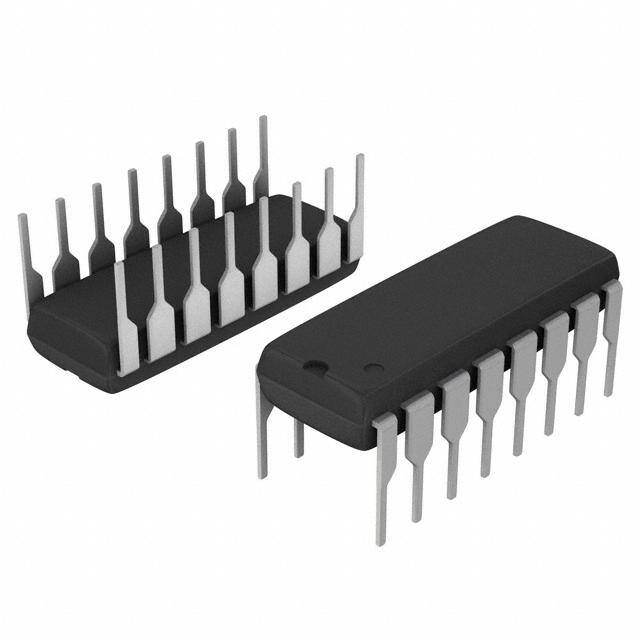
 Datasheet下载
Datasheet下载



